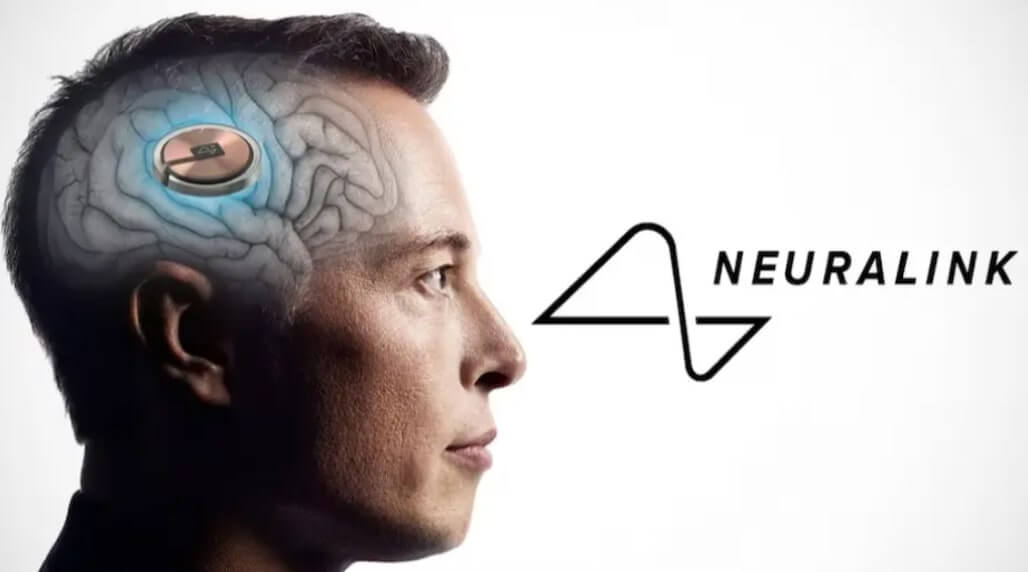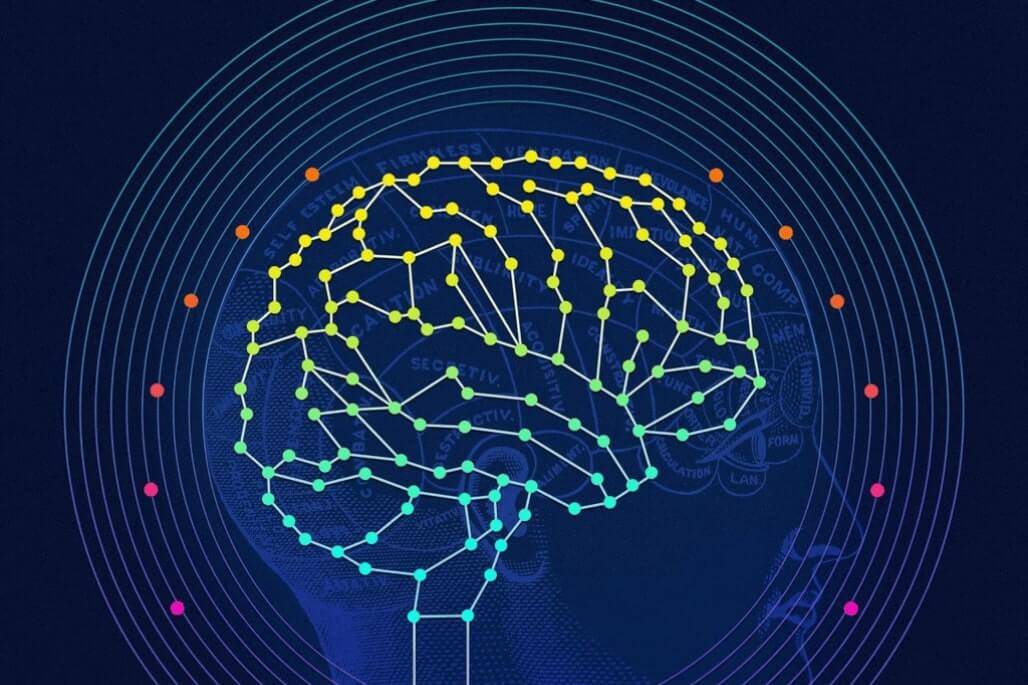Neuralink Telepathy technology icould let people control machines with their thoughts. This interesting idea also raises some big concerns.
There are worries about privacy, hacking, and mind control. More talks are needed about how to use this technology safely.
When looking to hire AI developers India, consider the groundbreaking advancements made by Neuralink’s Telepathy, where AI reads your mind and controls the world.
Neuralink’s Technology
Testing in Animals
So far Neuralink has tested their implants in rats and pigs.
The animal tests have shown the implants can read quality brain signals. In one demo, a pig named Gertrude had a Neuralink implant.
Gertrude’s brain signals were connected to a computer that predicted her muscle movements.
This shows the potential for implants to pick up detailed physical commands directly from the brain.
Goals for Human Trials
Neuralink aims to start testing their brain implants in human patients soon. The initial goal is to help people with paralysis or other disabilities.
For example, implants could let paralyzed patients control computer cursors or robotic limbs with their thoughts.
Further down the line, Neuralink wants healthy people to get implants too.
The human tests will show how well the implants read a person’s intentions just from their brain activity.
A Direct Brain-Computer Link
Today, technologies like EEG caps can measure crude brain signals non-invasively.
Neuralink’s implanted threads would provide a much higher fidelity, direct link between brain and machine.
This seamless interface is key to the technology’s promise.
Neuralink also envisions possibilities like uploading memories for storage or streaming music directly into a person’s brain.
Applications for Entertainment and Gaming
Beyond medical uses, Neuralink aims to develop consumer brain-computer applications for entertainment, education and gaming.
With an implant, people could potentially engage in more immersive virtual reality and augmented reality experiences. For example, they could feel like they are fully inside a digital world.
Neuralink could also integrate brain data to optimize digital learning tools. Implants that monitor cognitive responses could aid personalized education software.
In gaming, implants may enable control by thoughts and emotions, instead of keyboards or motion sensors.
Players could get biometrics feedback to improve gameplay as well.
However, consumer applications risk isolating people from real-world social connections.
They also amplify concerns like device addiction. Strong ethical checks are vital for the recreational uses of invasive neurotechnology.
Comparison to Other Brain Interface Projects
Neuralink isn’t the only project developing brain-computer interfaces. Groups like Kernel and Facebook’s CTRL-Labs are working in the space too.
DARPA has funded major brain interface research as well, like their Next-Generation Nonsurgical Neurotechnology project.
Academics at universities are also pushing brain interface technology forward.
Competitors may take different technical approaches from Neuralink. For instance, Kernel is focused on wearing headsets, not surgical implants.
Understanding these alternative efforts can help benchmark Neuralink’s progress while highlighting common development challenges.
Neuralink’s Long-Term Vision

Neuralink’s hopes to have highly advanced applications, like memory back-ups or full immersion in synthetic worlds.
The long-term vision even includes space exploration aided by AI-enhanced superintelligence via brain interfaces.
These futuristic notions are highly speculative.
They underscore the need for public input and regulatory oversight to ensure this brain tech respects social benefits and risks.
The potential Therapeutic Applications
Neuralink’s neural interface technique has potential therapeutic applications.
The implants may help people regain mobility, vision, hearing, and other abilities that have been lost due to sickness or injury.
For paralysis patients, implants could transmit motor signals to prosthetic limbs or exoskeletons.
Those with neurological conditions like ALS could use implants to communicate via a computer when they lose speech.
Implants that stimulate auditory regions could potentially restore hearing.
Restoring lost abilities would be Neuralink’s most directly beneficial medical application. It offers new independence and quality of life to patients.
However, questions remain about risks like unintended neurological side effects from long-term implants. Extensive clinical trials are needed to establish safety.
Competition from Other Neurotech Companies
Neuralink’s faces competition from other companies developing similar brain interface technologies.
Some competitors include Kernel, Paradromics, Synchron, Facebook and NextMind.
Each company is pursuing slightly different technological approaches and use cases.
For example, NextMind focuses on non-invasive EEG headsets for VR control. Paradromics uses flexible bioelectronics implants.
Having multiple players encourages innovation in the emerging neurotechnology space. However, there are risks of redundant products or competing standards.
Collaborative partnerships across companies could accelerate beneficial applications. Responsible practices need to be shared industry-wide.
Building Your AI Dream Team: Hiring Top AI Developers
https://www.zerogpt.comUnlock the potential of Artificial Intelligence with your dream team! Learn how to recruit top AI developers and tackle unique challenges in AI development.
Reading Minds with AI
How AI Could Interpret Brain Data

The data from Neuralink’s implants will be immense and complex. AI algorithms will be needed to make sense of the raw neural signals.
Companies looking to hire AI developers India may be inspired by the way Neuralink’s Telepathy uses AI to decode thoughts and impact actions.
Machine learning can find patterns and decode the intentions and meanings within massive datasets. This could let AI translate a user’s brain activity into words, images, or other outputs.
Thought Transmission
If the AI interpretation of neural data becomes advanced enough, Neuralink’s implants could transmit a person’s private thoughts and emotions.
This Neuralink’s mind-reading capability raises huge ethical questions around consent, privacy, and manipulation.
It could profoundly impact how people make decisions and relate to each other in a society where thoughts aren’t private.
Security Concerns with Brain Hacking
An interface that can read people’s thoughts also poses major security risks. Hackers or cyber criminals could potentially access, spy on, or alter someone’s thinking without consent.
Imagine the dangers if hackers could remotely access Neuralink’s implants and inject thoughts or emotions. Strong security measures would be essential.
Possibilities for Self-Understanding
On a positive note, Neuralink’s brain data could allow new self-knowledge.
People could learn about their cognitive habits, unconscious biases, and mental health from AI analytics of their neural activity.
The implants might help with meditation, mindfulness, or psychological therapy. But there are risks as well, like obsession over thoughts or negative emotions.
Concerns About Bias in Algorithms
A major challenge in applying AI to interpret Neuralink’s brain data is ensuring the algorithms are free of biases.
Datasets used to train the AI could reflect societal prejudices around factors like race, gender, age, and more.
Biased AI could lead to marginalized groups being characterized unfairly based on brain scans.
For instance, race-based biases could impact purported thought pattern analysis. Algorithms will require rigorous testing and auditing to avoid harmful discrimination.
The Black Box Problem
Today’s deep learning AI also suffers from a “black box” problem where its reasoning is opaque.
If Neuralink’s relies on deep neural networks to decode brain signals, the basis for the AI’s conclusions would be unclear.
Users may not be able to tell if readings of their thoughts or emotions are accurate or manipulated.
There could be no way to appeal algorithmic decisions. More research on Neuralink’s explainable AI is needed before algorithms interpret people’s neural data.
Controlling the World
Direct Control of Devices and Systems
If Neuralink’s implants can accurately transmit brain signals, users may gain direct control over digital systems, devices, and even machinery through their thoughts alone.
This could allow revolutionary advances like controlling prosthetic limbs, wheelchairs, or computers for people with movement disabilities.
However, it could also be misused to control technology without consent.
Automating Manual Labor
Some predict Neuralink’s implants could amplify human abilities in the workforce. Workers could potentially control robotics and automation systems with their mind.
While this may increase productivity, it raises concerns about exploiting workers or worsening economic inequality. Guidelines would need to ensure Neuralink tech does not harm workers.
Enhanced Human Intelligence
Beyond interfacing with external tech, Neuralink aims to enhance human intelligence itself.
Its implants could strengthen memory, multi-tasking skills, processing speed, and more.
This human enhancement angle evokes ethical dilemmas, especially around fairness and access.
Inequality could widen drastically if such mind augmentation is only available to the wealthy.
Authoritarian Possibilities
In the wrong hands, Neuralink brain data and access could enable authoritarian control.
Dictators with mind reading abilities could suppress dissent and crush opposition.
Totalitarian regimes could conceivably hack citizens’ Neuralink implants to monitor thoughts and manipulate emotions to their benefit. This scenario highlights why oversight and democratic controls are vital.
Class Divides and Inequality
Access to emerging neurotechnologies like Neuralink may end up divided along socioeconomic lines, worsening inequality. Initially, implants will likely only be available to the wealthy due to high costs.
As capabilities increase, those with augmented cognition or direct neural control of systems could gain immense economic advantages over unenhanced humans.
Policy measures around access and integration with education and labor are important to avoid a neurotech class divide.
Hiring AI Developers in India
India’s Expertise in AI and Engineering
India has a large, highly educated population with advanced skills suited to a company like Neuralink. India’s university system graduates a million engineers per year, many with training in AI.
Indian tech workers have valuable expertise in machine learning, neural networks, data science, and cloud computing.
They have fueled growth at Silicon Valley giants. Neuralink should leverage this talent pool.
India’s thriving startup ecosystem.
In addition to collaborating with large technology consultancies, Neuralink might tap into India’s thriving startup sector.
Numerous AI and data analytics startups in India are pioneering innovations in medical technology.
Early-stage ventures offer agility in applying AI to new use cases like brain-computer interfaces.
By acquiring or collaborating with Indian startups, Neuralink gains cutting-edge talent tackling similar neural tech challenges.
Cultural Factors and Public Attitudes
When expanding to the Indian market, Neuralink should carefully consider cultural factors and public attitudes.
For example, Hindus and Buddhists have philosophical traditions around consciousness that may inform views on neurotechnology.
Many in India may be open to enhancements for socioeconomic advancement.
But there may also be concerns about exploitation or foreign firms using Indians as test subjects. Engaging communities transparently and respectfully is crucial.
Benefits of Indian Facilities and Partnerships
Neuralink should look to open research and engineering facilities in tech hubs like Bangalore.
Indian partners could help build and refine the AI needed to safely interpret neural data from the company’s brain implants.
By tapping India’s engineering brainpower, Neuralink can develop ethical data practices and rigorous security safeguards.
Locating facilities in India would also help diversify Neuralink’s workforce.
India’s Remote Healthcare Advances
In addition, India has extensive experience increasing healthcare access through remote diagnosis and telemedicine technology.
This expertise could aid Neuralink’s goal of helping patients in underserved areas get fitted with brain implants.
Collaboration with Indian healthcare partners can ensure Neuralink implants reach all socioeconomic levels, not just western elites.
Prioritizing Ethics and Responsibility
Partnering with Indian developers and scientists would promote responsible research on emerging neurotechnology like Neuralink’s.
India’s tech workforce emphasizes ethics, social responsibility, and privacy protections.
They can provide valuable oversight on brain data usage as well as technology regulation. This ethical lens would benefit Neuralink’s development.
Corporate Control Scenarios
In addition to authoritarian states abusing Neuralink brain data, corporate misuse is another threat.
Companies could coerce employees to get implants for monitoring or optimization purposes.
Mass Neuralink data collection by corporations risks misuse for maximizing profits, advertising, credit scoring, insurance costs and more.
Strong regulations and employee protections would be essential to prevent exploitative corporate applications.
Class Divides and Inequality
Access to emerging neurotechnologies like Neuralink may end up divided along socioeconomic lines, worsening inequality. Initially, implants will likely only be available to the wealthy due to high costs.
As capabilities increase, those with augmented cognition or direct neural control of systems could gain immense economic advantages over unenhanced humans.
Policy measures around access and integration with education and labor are important to avoid a neurotech class divide.
However, mind reading technology like Neuralink raises crucial questions about consent, privacy, security, inequality, and control.
To steer this neurotechnology in a positive direction, policymakers, scientists, ethicists and the public need more transparent discussions.
And companies like Neuralink’s need to proactively embed ethics into their design process, workforce and corporate structure.
Responsible innovation of potentially society-altering technology requires cooperation across borders and stakeholders.
What guidelines or safeguards should be placed on Neuralink’s brain-interface technologies like Neuralink plans?
How can the public help keep harmful applications in check? Share your thoughts below.
Read More:



